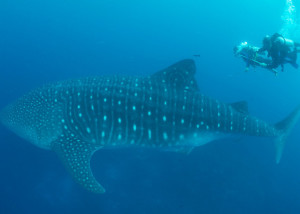What does a seahorse tail have to do with the original “flying machine,” Velcro and surfboards that are more maneuverable? The inventors of all three — Orville and Wilbur Wright, George de Mestral and Frank Fish, respectively — were inspired by nature (see Bioinspiration at the bottom).They were practicing biomimicry,a field of science that looks for innovative solutions to human problems by emulating nature.
In 2013, researchers at the Jacobs School of Engineering at UC San Diego were looking for something in nature that was flexible and resilient, in the hope that it could lead to better-designed robotic arms. The challenge for engineers: how to make a robot safe when working around “soft” humans, such as when a bot assists a physician during surgery or hands off a tool to a factory worker.
The researchers zeroed in on seahorses and their square, segmented tails.
“The tail is the seahorse’s lifeline” because it allows the animal to anchor itself to corals or seaweed and hide from predators, said Michael Porter, at the time a Ph.D. student at UC San Diego and now an assistant professor at Clemson University. “But no one has looked at the seahorse’s tail as a source of armor.”
The seahorse’s tail protects it from its main predators — wading birds, crabs and turtles, which all are capable of delivering crushing bites — by enabling the seahorse to lock onto plants such as seaweed. Porter knew its square plates make the seahorse’s tail stiffer, stronger and more resistant to strain — all at the same time. Usually, says Porter, strengthening any one of these characteristics will weaken at least one of the others.
After moving to Clemson, Porter assembled a team to take the question a step further. Researchers used a 3-D printer to build models of the seahorse’s tail and a set of rounded plates to see which worked better. Then they tried to destroy them. They bent, twisted, compressed and crushed the 3-D versions (see the illustrations above).
“New technologies like 3-D printing allow us to mimic biological designs but also build hypothetical models of designs not found in nature,” says Porter. “We can then test them against each other to find inspiration for new applications.”
Porter says engineers could design a similar structure to make flexible robotic arms, which could be used in medical devices, underwater exploration, and unmanned bomb detection and detonation.
Detailed findings were published in the journal Science in July.
BIOINSPIRATION: SCIENCE IMITATING NATURE

Bioinspiration, the practice of science imitating nature, is leading us into the future — one tail at a time.
Studying pigeons in flight wobbling from side to side helped the Wright Brothers solve the “flying problem” — how to control an aircraft and enable sustained flight.
If your BC employs a Velcro cummerbund, you have George de Mestral to thank. After a hunting trip in 1941, the Swiss engineer’s dog and clothing were covered in burs. Using a microscope, Mestral saw multiple hooks on the burs that attached to fur and socks. After experimenting, Mestral invented the hook-and-loop Velcro fastener.
And the better-performing surfboard? Frank Fish, a biology professor in Pennsylvania, wondered about the warty ridges called tubercles on humpback whale fins. Fish found that the bumps have a purpose: They reduce drag and noise, increase speed and boost power; today, they’re found on Fluid Earth surfboards.
Click here for more fun facts about seahorses, and keep up with the latest underwater news at scubadiving.com/news
 The project began an ambitious study to attach satellite tags to sharks at Darwin Island to track their movements.
The project began an ambitious study to attach satellite tags to sharks at Darwin Island to track their movements. 